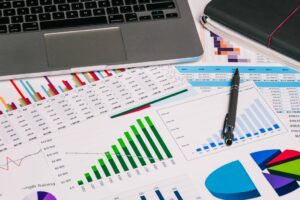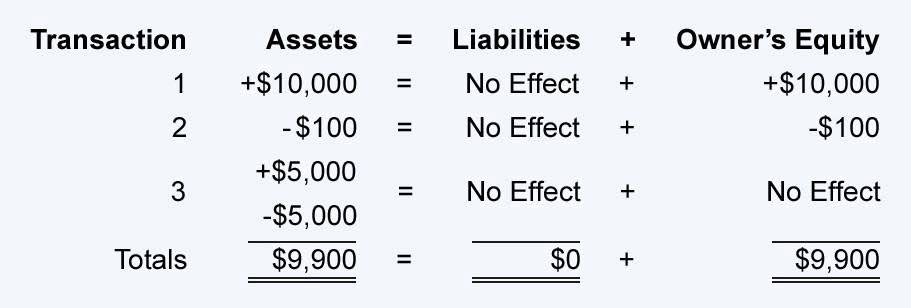
The straight-line method remains constant throughout the useful life http://dev.datatray.com/weighted-average-shares-outstanding-example-how-to-6/ of the asset, while the double declining method is highest on the early years and lower in the latter years. Consider a widget manufacturer that purchases a $200,000 packaging machine with an estimated salvage value of $25,000 and a useful life of five years. Under the DDB depreciation method, the equipment loses $80,000 in value during its first year of use, $48,000 in the second and so on until it reaches its salvage price of $25,000 in year five. This formula works for each year you are depreciating an asset, except for the last year of an asset’s useful life.

Calculation of the Declining Balance Depreciation Rate
The double declining balance method is a method used to depreciate the value of an asset over time. It is a form of accelerated depreciation, which means that double declining balance depreciation the asset depreciates at a faster rate than it would under a straight-line depreciation method. The double declining balance method calculates depreciation by applying a constant rate to an asset’s declining book value.
- In summary, when employing the double declining balance method, accountants should be aware of mid-year depreciation adjustments and the impact of the time-value of money on a company’s finances.
- This makes it ideal for assets that typically lose the most value during the first years of ownership.
- Under the straight-line method, the annual depreciation expense is 20 percent of the asset’s cost, or $2,000 ($10,000 cost / 5-year useful life).
- This is classically true with computer equipment, cell phones, and other high-tech items that are generally useful earlier on but become less so as new models are brought to market.
- The double declining balance method is considered accelerated because it recognizes higher depreciation expense in the early years of an asset’s life.
- This method falls under the category of accelerated depreciation methods, which means that it front-loads the depreciation expenses, allowing for a larger deduction in the earlier years of an asset’s life.
When Should the DDB Method Be Used?

At some point, straight-line depreciation calculated on the remaining book value (minus salvage value) over the remaining useful life will yield a higher annual amount than the DDB calculation. Estimating salvage value accurately is essential for financial planning and tax compliance. Although the method does not directly include salvage value in annual calculations, it becomes relevant in the final adjustment. For instance, the IRS requires compliance with the Modified Accelerated Cost Recovery System (MACRS), which may involve salvage value considerations for tax purposes. The rate of depreciation is defined according to the estimated pattern of an asset’s use over its useful life. The expense would be $270 in the first year, $189 in the second year, and $132 in the third year if an asset costing $1,000 with a salvage value of $100 and a 10-year life depreciates at 30% each year.
- The difference is that DDB will use a depreciation rate that is twice that (double) the rate used in standard declining depreciation.
- By accelerating the depreciation and incurring a larger expense in earlier years and a smaller expense in later years, net income is deferred to later years, and taxes are pushed out.
- This method aligns depreciation expense with the asset’s actual decline in productive capacity.
- Depreciation is an accounting method that allocates the cost of a tangible asset over its useful life.
- This is greater than the $4,600 in depreciation expense annually under straight-line depreciation.
Switching Depreciation Methods During an Asset’s Lifespan

For the past QuickBooks Accountant 52 years, Harold Averkamp (CPA, MBA) has worked as an accounting supervisor, manager, consultant, university instructor, and innovator in teaching accounting online. She holds a Bachelor of Science in Finance degree from Bridgewater State University and helps develop content strategies.


As an accountant, one should be comfortable with all methods of depreciation. We just looked at the double declining balance depreciation method, the others shouldn’t take too long to master. The Double Declining Balance (DDB) method is an accelerated depreciation technique that allows faster write-off of assets in their initial, more productive years. It can lead to significant tax advantages and better matching of expenses with the actual economic benefits of the asset. This method is faster than both the sum-of-the-years’ digits and straight-line methods.
- Salvage value, also known as residual value, is the estimated amount the asset is expected to be worth at the end of its useful life.
- The company can calculate declining balance depreciation for fixed assets with the formula of the net book value of fixed assets multiplying with the depreciation rate.
- Now you’re going to write it off your taxes using the double depreciation balance method.
- The double-declining balance (DDB) method is a widely used asset depreciation method.
- This pattern continues until the book value approaches the salvage value, ensuring depreciation never exceeds the asset’s worth.
- By the end of this guide, you’ll be equipped to make informed decisions about asset depreciation for your business.
